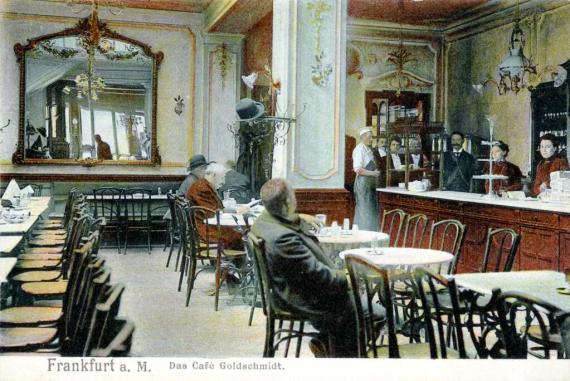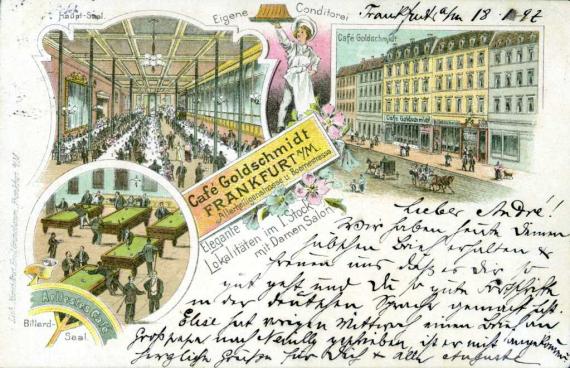Zeil 51/An der Staufenmauer
60313 Frankfurt am Main
Germany
From the middle of the 19th century, after the gradual demolition of the Judengasse, the former ghetto, Wilhelminian-style residential and commercial buildings were built on the demolition sites. One of the new buildings was the well-known Café Goldschmidt, prominently located in the immediate vicinity of the main synagogue, which was inaugurated in 1860. There is varying information about its origins; the Café Gundersheim owned by the brothers Moses and Joseph Gundersheim, which already existed at the beginning of the 19th century, probably merged into the later Café Goldschmidt; the owner was the café owner Benedikt Josef Goldschmidt. Café Goldschmidt, also known as "Café Jonteff" (Yiddish for feast day), was a Frankfurt institution from the 1840s and was open all day - usually from 6 am to 11 pm. Jewish business people from the city on the Main and the surrounding area met here, including butchers, livestock, fruit and vegetable traders, as well as architects, construction workers and pensioners. The house advertised a large billiard room, its own confectionery and "elegant premises on the first floor", meaning the so-called ladies' salon in Viennese coffee house style, "the meeting place of the female sex from the Ostend", as Paul Arnsberg analyzed it in retrospect. The specialties for the "better people" included Gugelhupf, Rodon and apple pie. And: "If you wanted to eat good cheesecake in Frankfurt, you went to Café Goldschmidt" (Arnsberg). There was also a cigar shop. At the beginning of 1930, Café Goldschmidt was history; the "Handelshof" opened at the address as the "largest modern public place" with a "café + vending machine + restaurant", as the advertisement in the community newspaper of the Jewish community of Frankfurt am Main promised. In the mid-1920s, the Frankfurt illustrator and caricaturist Lino Salini produced anti-Semitic impressions of everyday life at Café Goldschmidt.


Add new comment